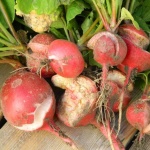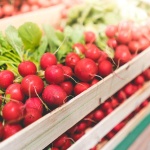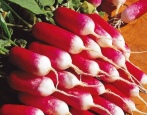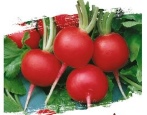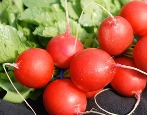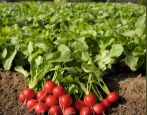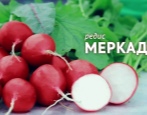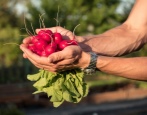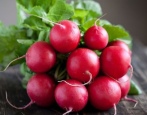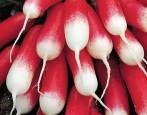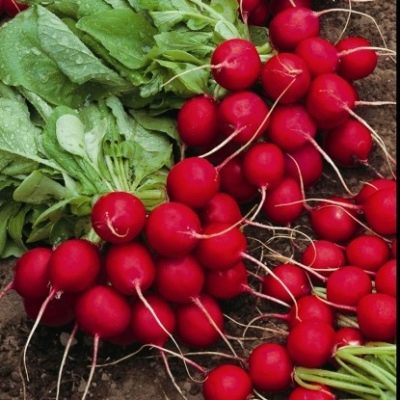
- Authors: Andrea Schieder, Netherlands
- Name synonyms: CELESTA
- Year of approval: 2009
- Ripening terms: mid-season
- Leaf rosette shape: upright
- Leaves: obovate, grayish green
- Petiole: with a slight anthocyanin coloration
- The form: rounded
- Coloration: Red
- Weight, g: 18-23
Lovers of such an early vegetable as radish always allocate a bed in the garden for planting their favorite root vegetable. One of the popular varieties is the mid-season Celeste hybrid, bred by Dutch specialists and capable of growing in any climatic conditions.
Breeding history
Radish Celeste is a first generation hybrid created by breeders of the Dutch company Enza Zaden Beheer B. V. in 2006. The authorship belongs to the biologist Andrea Schieder. Joined the ranks of the State Register of approved radish varieties in 2009. The vegetable is cultivated in different regions of Russia: from the Central to the Far East. They grow radishes both in small garden beds and in farm fields. Sowing is carried out both in open ground and in protected.
Description of the variety
The Dutch hybrid is a plant with a powerful upright rosette type. The tops of medium length, growing to a height of 30-35 cm. The plant is characterized by compactness, grayish-green foliage of obovate shape with a smooth surface of the plate, as well as strong petioles with a mild anthocyanin coloration. It is important to note that the radish is resistant to shooting as well as to flowering.
Characteristics of the appearance of the plant and root crops
The hybrid belongs to the medium-fruited species. Root crops ripen aligned, attractive in appearance, which captivates farmers and vegetable growers who grow vegetables for commercial purposes. The average weight of radish ranges from 18-23 grams, sometimes 25. The shape of the vegetable is correct, round, the diameter reaches 5 cm. The ripe root crop is evenly colored with bright red color. The skin of the tubers is thin, tender, with a smooth and shiny surface, on which there are no irregularities and other imperfections.
The harvested radish can be transported over long distances, as well as stored for a long time. In a cool and dark place, vegetables are stored for up to 2-3 weeks.
Purpose and taste of tubers
The Dutch radish stands out among its relatives for its excellent taste. The snow-white pulp has a tender, dense, crunchy and juicy structure without wateriness, voids and fibers. The taste of the tubers is balanced: pleasant sweetness goes well with the sharp notes that add piquancy to the vegetable. The skin of the radish is tender, not rigid.
Plucked root vegetables are ideal in vegetable salads, they are added to cold dishes, they are used to decorate sandwiches. In addition, the variety is suitable for beam production.
Maturation
The Dutch Celeste radish belongs to the mid-season class. From the moment of full germination to the ripening of juicy root crops, only 23-25 days pass. The emergence of sprouts and ripening of fruits are friendly, so you can harvest the crop in 1-2 times. If desired, several crops of radish can be carried out over the summer.
Yield
The hybrid is declared to be a high-yielding hybrid if you follow the standard care rules. From 1 m2 of plantings, you can get up to 1.5-1.7 kg of juicy tubers. In a favorable environment, the yield is higher - up to 3-3.5 kg of radish.
Growing and care
Radishes are cultivated by direct sowing into the ground.For this, a site is prepared in advance in which shallow grooves are made, where seeds are sown. The distance between the rows should not exceed 15 cm. The seeding depth of the seed is 1-2 cm. Usually, the seeds are spread at a distance of 5-7 cm, which will allow not thinning during cultivation.
The best time to plant radishes is considered to be the end of April or the beginning of May, when the temperature has stabilized and the return frosts have been left behind. Experienced vegetable growers plant radishes where previously cucumbers, tomatoes, legumes and early potatoes were grown. The optimal temperature indicator for the growth and development of radish is + 22-25 degrees.
Immediately after planting, it is required to cover the beds with lutrasil, which will accelerate germination, and also provide protection from the invasion of a spring fly.
Vegetable agricultural technology consists of standard procedures: regular watering with settled water, top dressing 2 weeks after germination, loosening and weeding of row spacings, which improves air permeability and moisture passage, prevention of viruses and insect infestations.
When growing radishes in a greenhouse, mulching will be required using chopped straw mixed with humus.
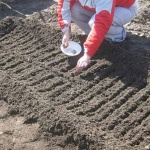


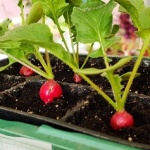
Soil requirements
Dutch radish is picky about the quality and nutritional value of the soil. Root crops are planted in a structured, loose, fertile, light and moist soil with neutral or low acidity. In acidic and waterlogged soils, radish grows poorly, practically does not bear fruit. Vegetable crops are often planted in light loams and sandy loams.
Required climatic conditions
Due to its good stress resistance, Celeste radish easily tolerates temperature fluctuations, minor cold snaps and heat. Vegetables are planted in a cleaned area where there is enough sun, light and heat. In addition, radishes do not like excessive dampness and cold winds.
Disease and pest resistance
The vegetable has excellent immunity to many viral and fungal diseases. In addition, the hybrid is resistant to downy mildew, flabbiness and cracking. Fungal rot develops only when the irrigation regime is violated.
